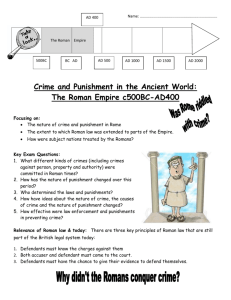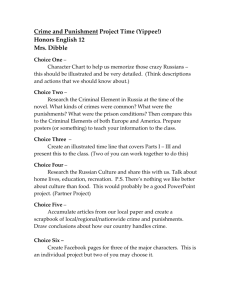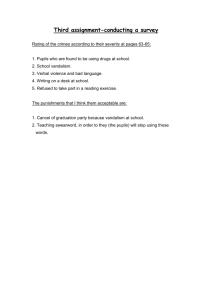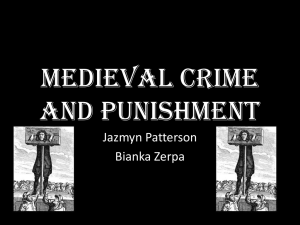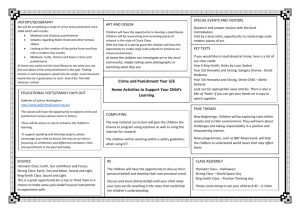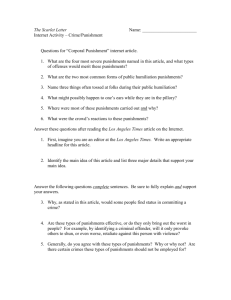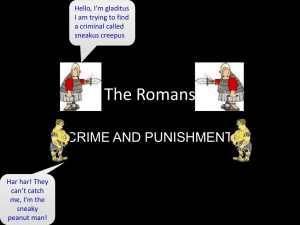Crime and punishment - webquest
advertisement
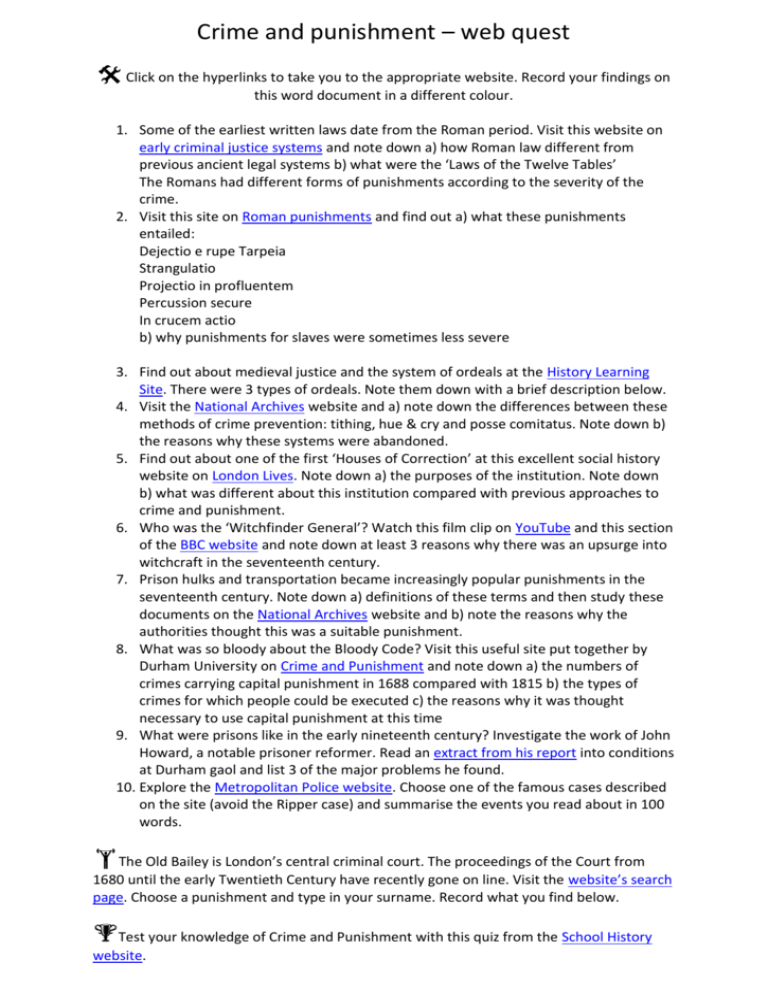
Crime and punishment – web quest Click on the hyperlinks to take you to the appropriate website. Record your findings on this word document in a different colour. 1. Some of the earliest written laws date from the Roman period. Visit this website on early criminal justice systems and note down a) how Roman law different from previous ancient legal systems b) what were the ‘Laws of the Twelve Tables’ The Romans had different forms of punishments according to the severity of the crime. 2. Visit this site on Roman punishments and find out a) what these punishments entailed: Dejectio e rupe Tarpeia Strangulatio Projectio in profluentem Percussion secure In crucem actio b) why punishments for slaves were sometimes less severe 3. Find out about medieval justice and the system of ordeals at the History Learning Site. There were 3 types of ordeals. Note them down with a brief description below. 4. Visit the National Archives website and a) note down the differences between these methods of crime prevention: tithing, hue & cry and posse comitatus. Note down b) the reasons why these systems were abandoned. 5. Find out about one of the first ‘Houses of Correction’ at this excellent social history website on London Lives. Note down a) the purposes of the institution. Note down b) what was different about this institution compared with previous approaches to crime and punishment. 6. Who was the ‘Witchfinder General’? Watch this film clip on YouTube and this section of the BBC website and note down at least 3 reasons why there was an upsurge into witchcraft in the seventeenth century. 7. Prison hulks and transportation became increasingly popular punishments in the seventeenth century. Note down a) definitions of these terms and then study these documents on the National Archives website and b) note the reasons why the authorities thought this was a suitable punishment. 8. What was so bloody about the Bloody Code? Visit this useful site put together by Durham University on Crime and Punishment and note down a) the numbers of crimes carrying capital punishment in 1688 compared with 1815 b) the types of crimes for which people could be executed c) the reasons why it was thought necessary to use capital punishment at this time 9. What were prisons like in the early nineteenth century? Investigate the work of John Howard, a notable prisoner reformer. Read an extract from his report into conditions at Durham gaol and list 3 of the major problems he found. 10. Explore the Metropolitan Police website. Choose one of the famous cases described on the site (avoid the Ripper case) and summarise the events you read about in 100 words. The Old Bailey is London’s central criminal court. The proceedings of the Court from 1680 until the early Twentieth Century have recently gone on line. Visit the website’s search page. Choose a punishment and type in your surname. Record what you find below. Test your knowledge of Crime and Punishment with this quiz from the School History website.

